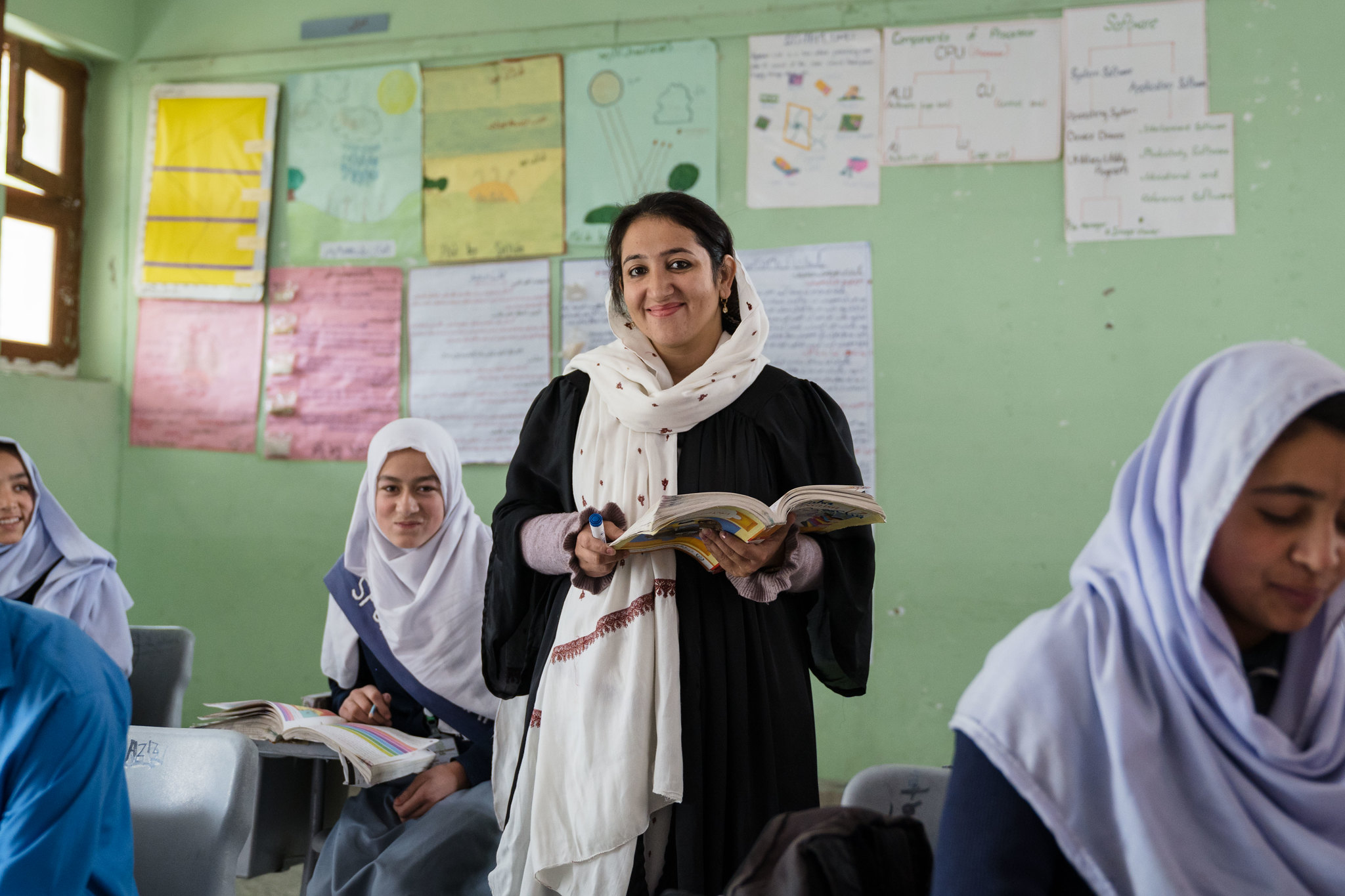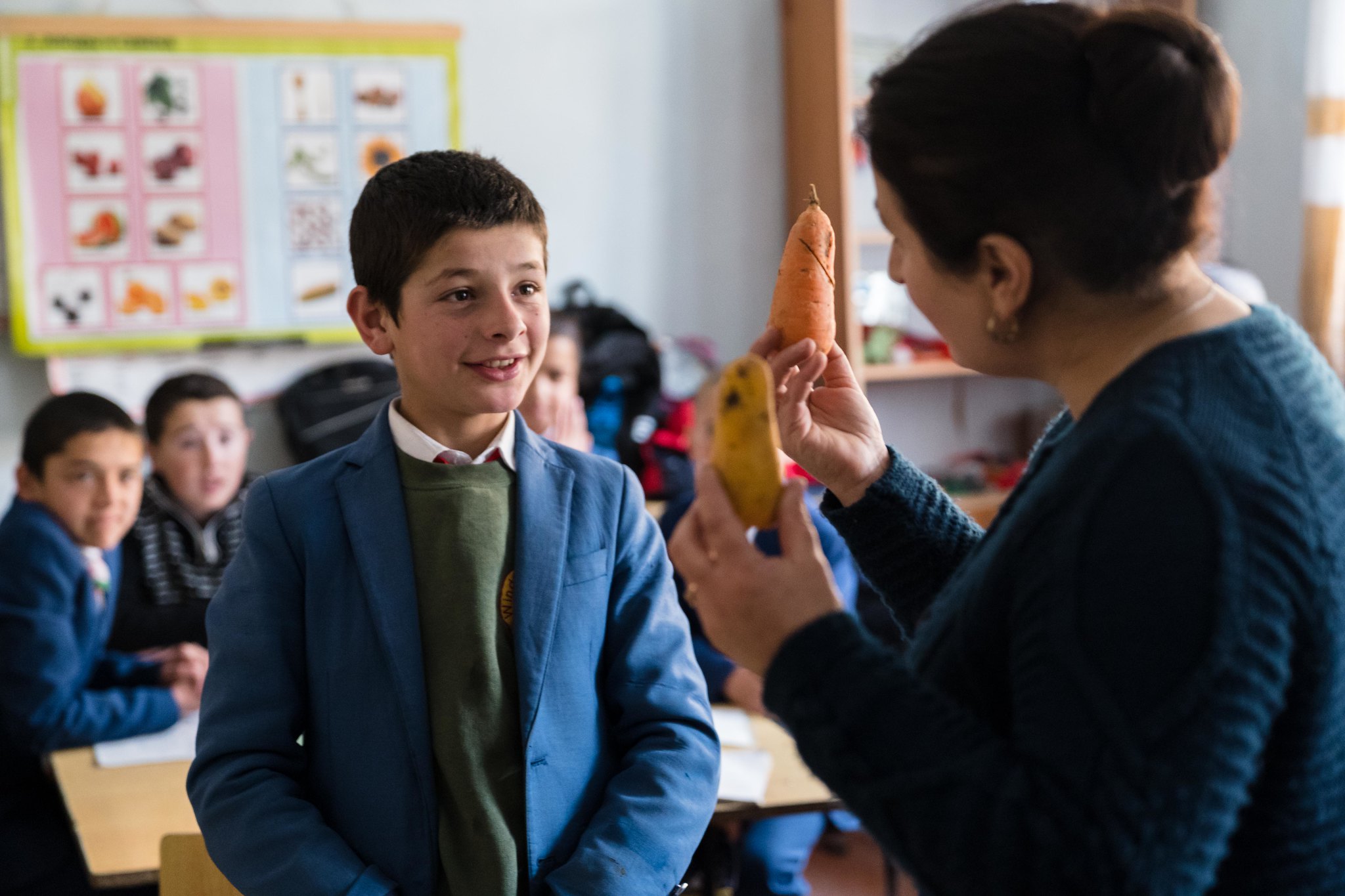Over the last few years, the global education discourse has placed increasing emphasis on the need for students to develop broader learning outcomes such as positive attitudes and values. To support educators to teach these, AKF has developed three new video-based courses.
Nafisa Shekhova, AKF’s Global Lead – Education, and Ana Barfield, AKF’s Global Practice Manager, speak about these new courses and what they hope they will achieve.
Nafisa and Ana talk briefly about the new courses.
Nafisa, tell us about AKF’s education programme to give us some context about this course?
[NS] The Aga Khan Foundation has been working in education with schools, governments and other partners for over 50 years. Our experience in education spans across 15 countries in Asia, Africa and Europe. Our overall goal is to equip children and young people with the knowledge, skills, attitude and values that are required for them to become contributing members of their societies. More specifically, we are focusing on enhancing children’s curiosity, imagination, resilience and their capacity to respect and care about their well-being and that of their friends, families, communities and the planet.
“Our overall goal is to equip children and young people with the knowledge, skills, attitude and values that are required for them to become contributing members of their societies.”
Nafisa Shekhova, Global Lead, Education
This new course – Creating an Inclusive Learning Environment – what is it and why was it created?
[NS] I’d like to first mention the Creating an Inclusive Learning Environment Guide, that these courses were based on. Over the last few years, the global discourse has focused on the need for students to develop broader learning outcomes; so in addition to knowledge and skills, an emphasis is placed on attitudes and values. These competencies are also known as ‘21st century skills’ or ‘social-emotional learning outcomes’. For the Aga Khan Foundation, we are focusing more on pluralistic values and attitudes. We believe that a learning environment is a critical place for young people to develop these competencies. So the Guide has been designed to provide a unique approach for educators to observe the integration of ethics and pluralism into classrooms through emotional climate and instructional strategies. The Guide builds on a range of internal and external tools such as ‘Class’, Scala’ and the recently developed World Bank ‘Teach’ but it adds a unique lens of inclusion.
So, once we developed the Guide, we wanted to make sure we shared it with educators as broadly as possible. However, based on the consultation with our education teams in the field, we realised that we needed to develop a training course that would help teachers and educators to have a better understanding of the approach and its application within the classroom. And rather than develop a traditional face-to-face course, we wanted to develop a video-based courses using AKF’s existing blended learning platform.

“We offer highly localised, highly adapted video-based and blended learning courses on a range of different topics for audiences that normally wouldn’t have access to such learning content.”
Ana Barfield
Ana, these courses are available through AKF’s Blended Learning Initiative platform, can you tell us about it?
[AB] We offer highly localised, highly adapted video-based and blended learning courses, on a range of different topics and for a range of audiences – audiences that normally wouldn’t have access to such learning content. We have courses for people working in civil society organisations, teachers, farmers, entrepreneurs, and many other key groups AKF supports. And they are not just in English but in Portuguese, Hindi, Gujarati, Arabic, Russian, Kyrgyz, Swahili. Anyone who is interested to take them can! And they are completely for free.
Creating an Inclusive Learning Environment comprises three video-based courses: “Creating an Inclusive Learning Environment”, “Development Dialogues in Education” and “Facilitating an Inclusive Learning Environment Workshop”. We filmed in classrooms in Kenya, Portugal and Pakistan, showing real teachers and students in action. All three courses together contain about seven hours of video content as well as self-assessment quizzes, exercises and other materials, like the Guide.
Who are these courses for?
[NS] The courses are for teachers and teacher mentors. We’re using classroom observation as an approach to see how they can integrate some of these critical aspects of teaching and learning within their classrooms. And for teacher mentors who are also known as supervisors or inspectors, and who are responsible for observing and mentoring teachers, these courses can really help not only build the capacity of teachers, but also strengthen their own knowledge and understanding about the inclusive learning environment and mentoring skills.
The courses are for all teachers and educators globally as the key aspects of the learning environment covered within the courses are universal. When we developed the Guide and online courses, we worked with educators from several countries such as Kenya, Portugal, Pakistan and Canada.
[AB] This course was created in English for a global audience but a partner organisation of ours in Tajikistan, the Institute for Professional Development, is now in the process of localising this course into Tajik. We later hope to localise the courses into other languages.
One of the videos from the course.
[NS] One of the reasons we have created this inclusive learning classroom guide, is that in the past our focus was mainly on improving instructional quality, and very little has been allocated to helping teachers and educators to understand the importance of positive climate, such as emotional climate, teacher sensitivity and classroom agreement in students’ personal wellbeing and learning outcomes. What we are learning more from both the research and our own experiences is that it is very important for teachers to create a positive emotional climate in the classroom and connect with students. Teachers and students need to respect each other. Studies have also shown that when students like and respect their teacher, they do better in those subjects.
Secondly, our learning experiences suggest that it can be difficult for teachers to apply what they learn in teacher trainings when they return to their classrooms. We have developed practical observable indictors and included examples of videos from real classrooms for each dimension of learning environment to help teachers and educators understand these in a practical way.

“Pluralistic and ethical values and attitudes help students to navigate and respond positively to the challenges and opportunities associated with a changing, diverse, and connected world.”
Nafisa Shekova
Pluralism and ethics play a large role in these courses, why is that?
[NS] Alongside the broader approach of the Aga Khan Development Network in advancing pluralism and respect for diversity, the Aga Khan Foundation’s education programme has adopted pluralism and ethics as lens by which it approaches its work with teachers and educators. We believe education is a critical tool to help students achieve transformative results.
First, education helps students to have a better understanding and appreciation of the differences and similarities within and between communities. This often leads to greater inclusivity both in the classroom and in the community. Second, pluralistic and ethical values and attitudes help students to navigate and respond positively to the challenges and opportunities associated with a changing, diverse, and connected world. And, third, pluralism and ethics provide space for teachers and their students to identify and discuss assumptions behind practices and beliefs that don’t respect difference, use violence as a means of expression, or prevent people from distinguishing between right and wrong.
I have to ask about Coronavirus, have these courses become more relevant now?
But I also think it’s a good time for teachers who might be staying at home, and have some time for their professional development, to take these courses. These courses are available and free and if teachers have access to internet they can easily take these courses. Course three is for facilitators who can take the course and deliver it to other educators face to face. We hope many educators will take all three courses and as trained facilitators can deliver the training to the teachers who don’t have access to internet.
Thank you Nafisa and Ana.




